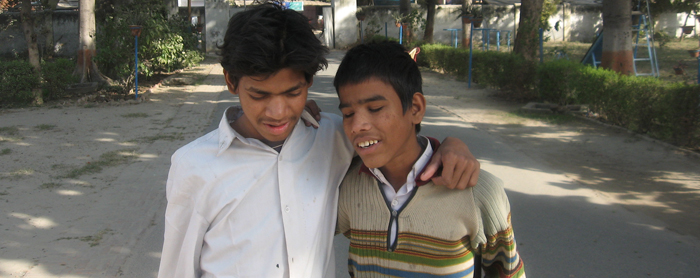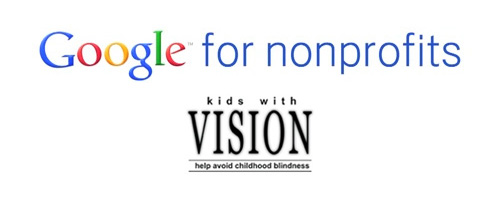Let’s work together to reduce prevalence.
Human history is filled with examples of ordinary people working together to share knowledge to achieve a greater purpose.
Consider Polio: Less than three decades ago, 1000 children were infected by the disease every day in over a 125 countries worldwide. Now, with education and a pro-active approach, this number has declined by 99 percent. It didn’t happen overnight. It took time. How did it happen? It happened because people around the world – people just like you – dedicated their time and energy to spreading the word and acting on that knowledge.
Avoidable childhood blindness is no different. We may not realize it right away, but a simple act of sharing knowledge with others may result in development of innovative solutions to combat the occurrence of avoidable childhood blindness.
What is Childhood Blindness?
Childhood blindness refers to a group of diseases and conditions occurring in childhood or early adolescence, which, if left untreated result in blindness or severe visual impairment that are likely to be untreatable later in life.
What is Avoidable Blindness?
Avoidable blindness is defined as blindness which could be either treated or prevented by known, cost-effective means. 43% of childhood blindness is avoidable.
What is Treatable Blindness?
Treatable are those conditions that could have been treated early to prevent blindness. The major causes of treatable blindness are:
- Cataract
- Amblyopia
- Glaucoma
- Retinopathy of Prematurity [both avoidable and treatable]
What is Preventable Blindness?
Preventable are conditions that are amenable to primary prevention, i.e. where the condition causing blindness could have been entirely prevented. The major causes of preventable blindness are:
- Measles infection
- Vitamin A deficiency
- Ophthalmia neonatorum [Disease transmission through the birth canal]
- Use of harmful traditional eye remedies/medication
Knowledge is Power. Spread it.
- There are an estimated 1.4 million blind children in the world.
- An estimated 500,000 new cases each year of childhood blindness - roughly one per minute.
- Blindness in children is often preventable if communities and parents become aware of the causes.
- More than 40% of childhood blindness cases are avoidable.
- As many as 60% of blind children die within a year of losing their sight, mainly as a result of the condition causing their blindness.
- It is estimated that 90% of children who are blind do not go to school.
- Corneal scarring (most common cause of childhood blindness) can be prevented by two drops (cost: 5 cents) of Vitamin A.
- Without early intervention for cataract blindness children may go blind permanently.
- It costs just ($100-$200) for a child cataract operation. Many non-profit organizations and NGOs waive the fee.
Please note data, definitions and other research results were taken solely for educational/non-profit purposes from the sites below.
Child Sight Foundation
 Child Sight Foundation (CSF) is a non-Government and non-profit organization working to eliminate avoidable blindness and to establish a right-based enabling environment for visually impaired and blind children in Bangladesh leading to goals of VISION 2020 and Millennium Development Goals (MDG).
Child Sight Foundation (CSF) is a non-Government and non-profit organization working to eliminate avoidable blindness and to establish a right-based enabling environment for visually impaired and blind children in Bangladesh leading to goals of VISION 2020 and Millennium Development Goals (MDG).
The International Centre for Eye Health (ICEH)
 The International Centre for Eye Health (ICEH) is based at the London School of Hygiene & Tropical Medicine and carries out Research and Education activities to improve eye health and eliminate avoidable blindness, with a focus on low income populations.
The International Centre for Eye Health (ICEH) is based at the London School of Hygiene & Tropical Medicine and carries out Research and Education activities to improve eye health and eliminate avoidable blindness, with a focus on low income populations.
ORBIS
 International is a global health organization that prevents and treats blindness by providing quality eye care that transforms the lives of millions of families throughout the developing world.
International is a global health organization that prevents and treats blindness by providing quality eye care that transforms the lives of millions of families throughout the developing world.
Vision 2020: The Right to Sight

 VISION 2020 is the global initiative for the elimination of avoidable blindness, launched jointly by the World Health Organization (WHO) and the International Agency for the Prevention of Blindness (IAPB) with an international membership of NGOs, professional associations, eye care institutions and corporations.
VISION 2020 is the global initiative for the elimination of avoidable blindness, launched jointly by the World Health Organization (WHO) and the International Agency for the Prevention of Blindness (IAPB) with an international membership of NGOs, professional associations, eye care institutions and corporations.
USAID
 USAID’s Child Blindness Program originated through a Congressional directive in 1991 to prevent and treat child blindness. Since then, 25 eye care and health NGOs have received grants totaling more than $20 million to implement eye care interventions in 58 countries. The primary interventions include surgery, eye health education, vision screening and provision of eyeglasses, education and rehabilitation services, and training. The sustainability of these interventions depends on high quality care, sufficient human resources, increased demand for services, affordable costs, adequate and functional equipment, and efficient clinic management and systems.
USAID’s Child Blindness Program originated through a Congressional directive in 1991 to prevent and treat child blindness. Since then, 25 eye care and health NGOs have received grants totaling more than $20 million to implement eye care interventions in 58 countries. The primary interventions include surgery, eye health education, vision screening and provision of eyeglasses, education and rehabilitation services, and training. The sustainability of these interventions depends on high quality care, sufficient human resources, increased demand for services, affordable costs, adequate and functional equipment, and efficient clinic management and systems.
Sightsavers
 Sightsavers works to combat blindness in developing countries, restoring sight through specialist treatment and eye care. We also support people who are irreversibly blind by providing education, counselling and training. We help the people who need it most - those living in poverty in some of the world's poorest countries.
Sightsavers works to combat blindness in developing countries, restoring sight through specialist treatment and eye care. We also support people who are irreversibly blind by providing education, counselling and training. We help the people who need it most - those living in poverty in some of the world's poorest countries.






